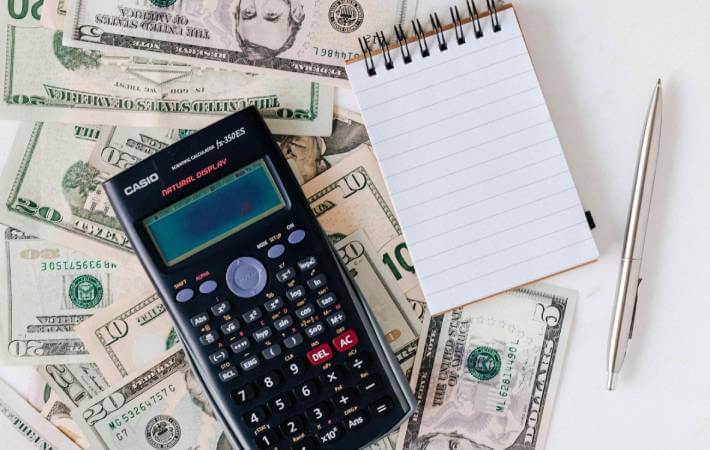
When Mortgage Rates Are Low: What Does It Mean For You?
If you’re a homeowner or looking to be one, understanding what it means when mortgage rates are low is incredibly important. Here’s what you need to know.
What does this mean for buyers?
Low Interest rates can certainly help when it comes to financing a home. But before we get into the nitty gritty of how, let’s talk about what type of mortgage you have: fixed rate or adjustable?
Fixed-rate mortgages are best because they offer stability with their lower risk and higher returns–they’re safer than other forms such as variable rate loans! This is good news if your finances need some extra security from fluctuations in market values (i.e., interest rates).
Homeowners with adjustable-rate mortgages have most likely noticed their monthly payments decrease with the recent rate cut. By lowering the interest rate on mortgages, borrowers who are cautious about their finances could be able to lock it in with a fixed-rate loan. This will ensure that they don’t have any surprises later when rates go up again and drive up monthly payments drastically!
How today’s mortgage rates affect buying power
Based on data compiled by Credible, mortgage rates have remained unchanged since yesterday. Rates last updated on Nov. 16, 2021. These rates are based on the assumptions shown here. Actual rates may vary.
- 30-year fixed mortgage rates: 3.125%, unchanged
- 20-year fixed mortgage rates: 2.875%, unchanged
- 15-year fixed mortgage rates: 2.375%, unchanged
- 10-year fixed mortgage rates: 2.375%, unchanged
The 2.688% average mortgage rate is just about what you can expect to pay for your home loan today, but don’t worry – it’s still possible to get a good deal! For example, if an applicant has been looking at rates from 4-6 months ago and decides not touch anything during this period because they know the market will only go up from here (as experts predict), then by waiting till 2021 their interest may turn out less expensive than securing financing now while assuming more risk that interest rates might decrease before then or somehow come back down drastically later on when people start refinancing again as prices rise even higher due his/her income growth over time alone.
A 1% drop could add $30,000 to your budget
Interest rates are often one of the most important factors in deciding whether or not to buy something. For example, with lower mortgage rates usually equating to a lower monthly payment for home buyers- it's no wonder that many people take this opportunity!
"A 1% point drop in rates - such as from 4.5% to 3.5% - leads to a monthly savings of $167 on a $200,000 mortgage," says Lawrence Yun, chief economist for the National Association of Realtors.
Consider the following scenario:
A home buyer has a monthly gross income of $5,000 and an expected total monthly debt of $2,250. Their DTI (debt-to-income) ratio is 45%
If the home buyer takes out a 30-year fixed loan of $250,000, At 4% interest, the monthly payment for principal, interest, taxed, and insurance would be $1,193
Now, consider the same homeowners rate is actually 3.5%. "That rate decrease of a half percent increases the purchasing power by $15,000; that assumes $1,122 is the maximum payment the homeowner can afford," says Brian Koss, executive vice president of Mortgage Network. At 3% it would lower the monthly payment to just $1,051, boosting buying power to $30,000," said Koss.
Why mortgage rates are so low
Mortgage rates have been on a roller coaster in November. But, despite rises and falls, they haven't moved much outside their current range of 3% to 3.15%, according to Freddie Mac.
The reason for the rate decline throughout 2021, "Mortgage rates follow yields in the U.S. Treasury debt. For example, rates for 30-year fixed mortgages follow the yield on the 10-year Treasury note," he says. "And yields on U.S. treasuries have an inverse relationship to U.S. Treasury bond prices, which have been rising for the past nine to 12 months." explains Saro Vasudevan, president of Eave/Home Loans at HomeLight.
With the exception of the United States the global economy is also a concern. Vasudevan states, "Global economists predict that yields, and mortgage rates, will continue to trend downward. That's because an economic correction is expected to occur in the near future, even in the United States,"
Interest rates around the globe have been dropping. "So mortgage rates are moving in tandem," says Koss. "Additionally, the economy is slowing due to the tariffs and other factors. So our interest climate is shifting lower."
Lastly, the shifting policies of the Federal Reserve have also had an impact on rates. "So even just the change in posture by the Fed has led to big declines in mortgage rates," Yun states.
Will mortgage rates drop again soon?
Historically low mortgage rates are a big motivator for homebuyers right now. In 2020 alone, rates hit new record-lows 16 times, and the trend continued into the early part of this year. Many hopeful homebuyers are now wondering if they should put their plans on hold and wait for the lowest rates imaginable. However, the reality is, acting sooner rather than later may be the actual win if you're ready to buy a home. According to Greg McBride, Chief Financial Analyst for Bank rate : "As vaccines become more widely available and a return to normal starts to come into view, we'll see mortgage rates bounce off the record lows." While only a slight increase in mortgage rates is projected for 2021, some experts believe they will start to rise. Over the past week, for example, the average mortgage rate ticked up slightly, reaching 2.79%. This is still incredibly low compared to the trends we've seen over time. According to Freddie Mac: "Borrowers are smart to take advantage of these low rates now and will certainly benefit as a result."
Here’s Why
As mortgage rates rise, the increase impacts the overall cost of purchasing a home. The higher the rate, the higher your monthly mortgage payment, especially as home prices rise too. Sam Khater, Chief Economist at Freddie Mac, says: "The forces behind the drop in rates have been shifting over the last few months and rates are poised to rise modestly this year. The combination of rising mortgage rates and increasing home prices will accelerate the decline in affordability and further squeeze potential homebuyers during the spring home sales season."
What does this mean for buyers?
Right now, the inventory of houses for sale is also at a historic low, making it more challenging than normal to find a home to buy in many areas. As more buyers hit the market in the typically busy spring buying season, it may become even harder to find a home in the coming months. With this in mind, Len Keifer, Deputy Chief Economist for Freddie Mac, recommends taking advantage of both low mortgage rates and the opportunity to buy: "If you've found a home that fits your needs at a price you can afford, it might be better to act now rather than wait for future rate declines that may never come and a future that likely holds very tight inventory."
Bottom Line
While today's low mortgage rates provide great opportunities for homebuyers, we may not see them stick around forever. If you're ready to buy a home, let's connect so you can take advantage of what today's market has to offer.
Your next step
If you're ready to buy and can afford it, the time to purchase a home is now! Fill out our Online Application to see if you qualify! We can get you pre-approved in minutes!

